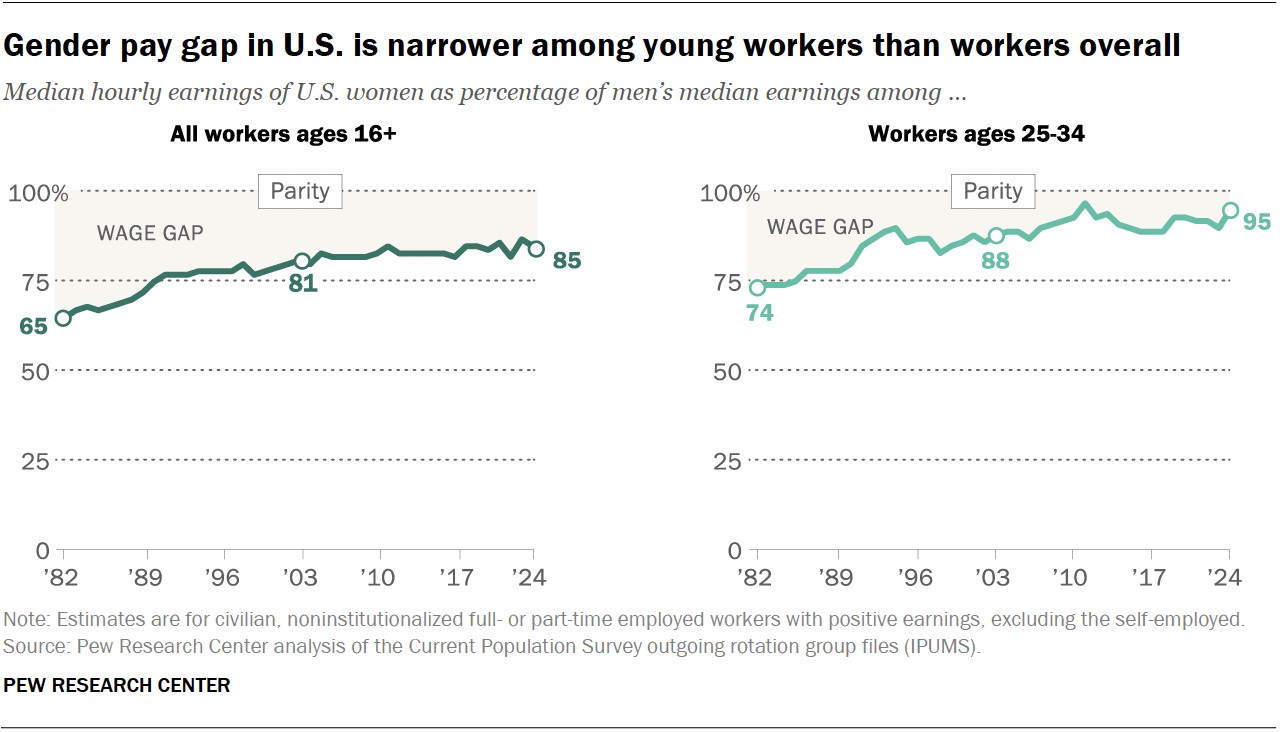The gender pay gap, a persistent issue in the U.S., reveals that women consistently earn less than men. In 2024, women earned 85% of men’s earnings, a slight improvement from 81% in 2003, according to a Pew Research Center analysis. This translates to women earning 85 cents for every dollar earned by men. This disparity is smaller for younger workers (ages 25-34), with women earning 95 cents for every dollar earned by men in the same age group.
The Gender Pay Gap: A Persistent Disparity
While the gap has narrowed slightly over the past two decades, it remains significant. The 15-cent gap in 2024 represents a substantial difference in earnings between men and women across all age groups. However, progress has been made since 1982, when the gap was 35 cents. For younger workers, the gap has decreased from 26 cents to just 5 cents.
Factors Contributing to the Gender Pay Gap
Several factors contribute to this ongoing disparity:
Occupational Segregation
Women are often concentrated in lower-paying occupations, such as education and healthcare, while men are more prevalent in higher-paying fields like finance and technology. Even when women enter traditionally male-dominated professions, they often earn less than their male counterparts.
Work Experience
Women are more likely to take time off from work for family responsibilities, such as childcare or eldercare. These career interruptions can impact their earning potential and contribute to the pay gap.
Gender Discrimination
While difficult to measure, gender discrimination in hiring, promotion, and salary negotiations likely plays a role in perpetuating the wage gap. Implicit bias and overt discrimination can both contribute to unequal pay.
Societal Perceptions and Pressures
A Pew Research Center survey highlighted differing perceptions about the causes of the gender pay gap. Half of U.S. adults believe that employers treating women differently is a major reason, while others cite women’s choices about work-life balance and their concentration in lower-paying jobs. Women are more likely than men to attribute the gap to unequal treatment by employers.
Furthermore, working women, especially mothers, often face greater pressure to prioritize family responsibilities. This societal expectation can limit their career advancement and contribute to the pay gap.
Career Aspirations and Leadership Roles
While women have made strides in educational attainment and workforce participation, they remain underrepresented in leadership positions. Fewer women hold top management roles compared to men, and this disparity in leadership contributes to the overall pay gap.
Conclusion: Bridging the Gap
Closing the gender pay gap requires addressing the multifaceted factors contributing to it. Promoting pay transparency, combating discrimination, supporting work-life balance, and encouraging women’s leadership are crucial steps towards achieving pay equity. While progress has been made, significant work remains to ensure that women earn equal pay for equal work.
